QUEEN OF
FASHION

WHAT MARIE ANTOINETTE WORE
TO THE REVOLUTION
CAROLINE WEBER
HENRY HOLT AND COMPANY NEW YORK

Henry Holt and Company, LLC
Publishers since 1866
175 Fifth Avenue
New York, New York 10010
www.henryholt.com
Henry Holt and  are registered trademarks of
are registered trademarks of
Henry Holt and Company, LLC.
Copyright 2006 by Caroline Weber
All rights reserved.
Distributed in Canada by H. B. Fenn and Company Ltd.
Library of Congress Cataloging-in-Publication Data
Weber, Caroline, [date]
Queen of fashion: what Marie Antoinette wore to the Revolution / Caroline Weber.1st ed.
p. cm.
Includes bibliographical references and index.
ISBN-13: 978-0-8050-7949-4
ISBN-10: 0-8050-7949-1
1. Marie Antoinette, Queen, consort of Louis XVI, King of France, 17751793Clothing. 2. FashionFranceHistory18th century. 3. FranceCourts and courtiersClothingHistory18th century. 4. FranceHistoryLouis XVI, 17741793. I. Title.
GT865.W37 2006
391.00944dc22
2006041234
Henry Holt books are available for special promotions and premiums. For details contact: Director, Special Markets.
First Edition 2006
Designed by Kelly Too
Printed in the United States of America
1 3 5 7 9 10 8 6 4 2
For Tom, as always
To be the most la mode woman alive seemed to [Marie Antoinette] the most desirable thing imaginable; and this foible, unworthy of a great sovereign, has been the sole cause of all the exaggerated faults that people have so cruelly ascribed to her.
THE COMTESSE DE BOIGNE
These fashions are symbolic and women of quality will know perfectly well how to interpret them.
LE JOURNAL DE LA MODE ET DU GOT
CONTENTS
QUEEN OF FASHION

INTRODUCTION
D esigned for his 2000 Christian Dior Masquerade and Bondage collection, John Gallianos Marie Antoinette dress tells an unexpected story. True to the architecture of eighteenth-century court costume, the gown features tantalizing dcolletage, a rigidly corseted waist, a ladder or chelle of flirty bows on the bodice, and a froth of flounced skirts inflated by petticoats and hoops. Its splendid excess evokes Frances most colorful queen... even before one notices the embroidered portraits of the lady herself that adorn each of its hoop-skirted hip panels. (Plate 1.)
But the two portraits deserve a closer look, for it is they that tell the story. On the gowns left hip panel the designer has placed an image of Marie Antoinette in her notorious faux shepherdesss garba frilly little apron tied over a pastel frock, a decorative staff wound with streaming pink ribbons, and a mile-high hairdo obviously ill suited to the tending of livestock. In keeping with the Queens frivolous reputation, the embroidered ensemble is more suggestive of Little Bo Peep than of lofty monarchical grandeur. On the right hip panel, Galliano offers a depiction of the same woman, also devoid of royal attributes, but this time in a mode more gruesome than whimsical. Here, she wears a markedly plain, utilitarian dress, with a simple white kerchief knotted around her throat and a drooping red liberty bonnetthe emblem of her revolutionary persecutorsclamped onto her brutally shorn head. This image portrays the consort trudging toward the guillotine, to lay her neck beneath its waiting blade.
Gallianos opposing vignettes elegantly express the French queens well-known trajectory from glamour to tragedy, from extravagant privilege to utter defeat. Yet the juxtaposition does more still. Weaving the arc of her roller-coaster existence into the very fabric of a dress, the designer posits what appears to be a direct relationship between Marie Antoinettes frippery and her demise. He seems to imply that her destiny as an icon both of ancien rgime frivolity and of revolutionary vengeanceof capricious, entitled masquerade and deadly political bondageis closely intertwined with the history of her apparel. This is a formulation that I find revelatory indeed, for, like Galliano, I have scrutinized Marie Antoinettes fashion statements. And I have discovered that they were, in every sense, accessories to the campaign she waged against the oppressive cultural strictures and harsh political animosities that beset her throughout her twenty-three-year tenure in France.
This is a work about the role of fashion in the life of Marie Antoinette, whose clothing choicesso influential in the last decades of the eighteenth centuryplayed a part in determining both her own fate and that of the ancien rgime as a whole. This is not a tale that other biographers have chosen to recount. From Edmund Burke in the eighteenth century to Stefan Zweig in the twentieth, many chroniclers of her life and times have cast Marie Antoinette as the icon of an exquisite but doomed social order, and not without reason.
But I think there is more to consider about this icon. In charting Marie Antoinettes fateful course from the gilded halls of Versailles to the blood-splashed steps of the guillotine, historians rarely emphasize the tremendous importance that her public attached to what she was wearing at each step along the way. In a recent anthology edited by Dena Goodman, a group of contemporary scholars explores how crucial political and cultural contests were enacted on the very body of the Queen.
It is time for a still more detailed treatment of this issue, because a thorough reexamination of Marie Antoinettes biography reveals the startling consistency and force with which her costumes triggered severe sociopolitical disorder. As Gallianos gown suggests, the interplay between the consort and her public was an incendiary, ultimately fatal one. By examining the sartorial politics that informed her rise and fall, I hope to cast new light on this endlessly analyzed, inexhaustibly fascinating historical figure.
FROM THE MOMENT THE FOURTEEN-YEAR-OLD AUSTRIAN-BORN ARCHduchess Maria Antonia arrived in France to marry the heir to the Bourbon throne, matters of clothing and appearance proved central to her existence. For the future and, later, reigning queen, a rigid protocol governed much of what she wore, how she wore it, when she wore it, and even who put it on her person. Designed to showcase and affirm the magnificence of the Bourbon dynasty, this protocol had been imposed by French monarchs on their courtiers, and on their consorts, for generations.
Even before she left her native Vienna for the court of France in the spring of 1770, the young princess received an intensive crash course in the Bourbon approach to looks, dress, and public image. She was redesigned from tooth to coif, and a renowned French dance instructor trained her to move gracefully while wearing high heels, hoopskirts, and a hefty, cumbersome train. Her appearance, her elders ceaselessly reminded her, would make or break her success as a French royal wife.
Yet from her earliest days at Versailles, Marie Antoinette staged a revolt against entrenched court etiquette by turning her clothes and other accoutrements into defiant expressions of autonomy and prestige. Although, as many scholars have pointed out, she did not evince a sustained interest in politics qua broad-reaching international or domestic policy, it is my belief that she identified fashion as a key weapon in her struggle for personal prestige, authority, and sometimes mere survival.



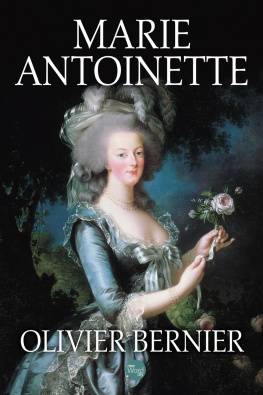
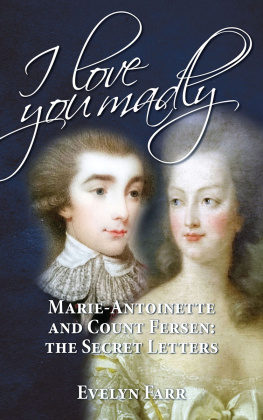
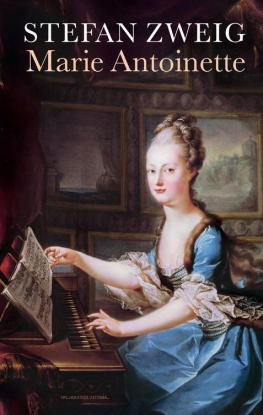


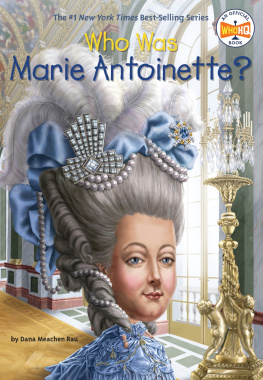
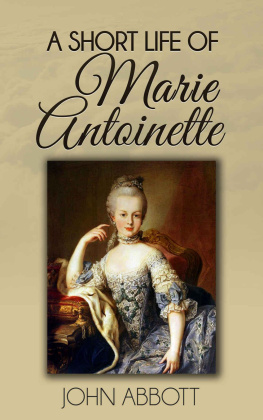


 are registered trademarks of
are registered trademarks of